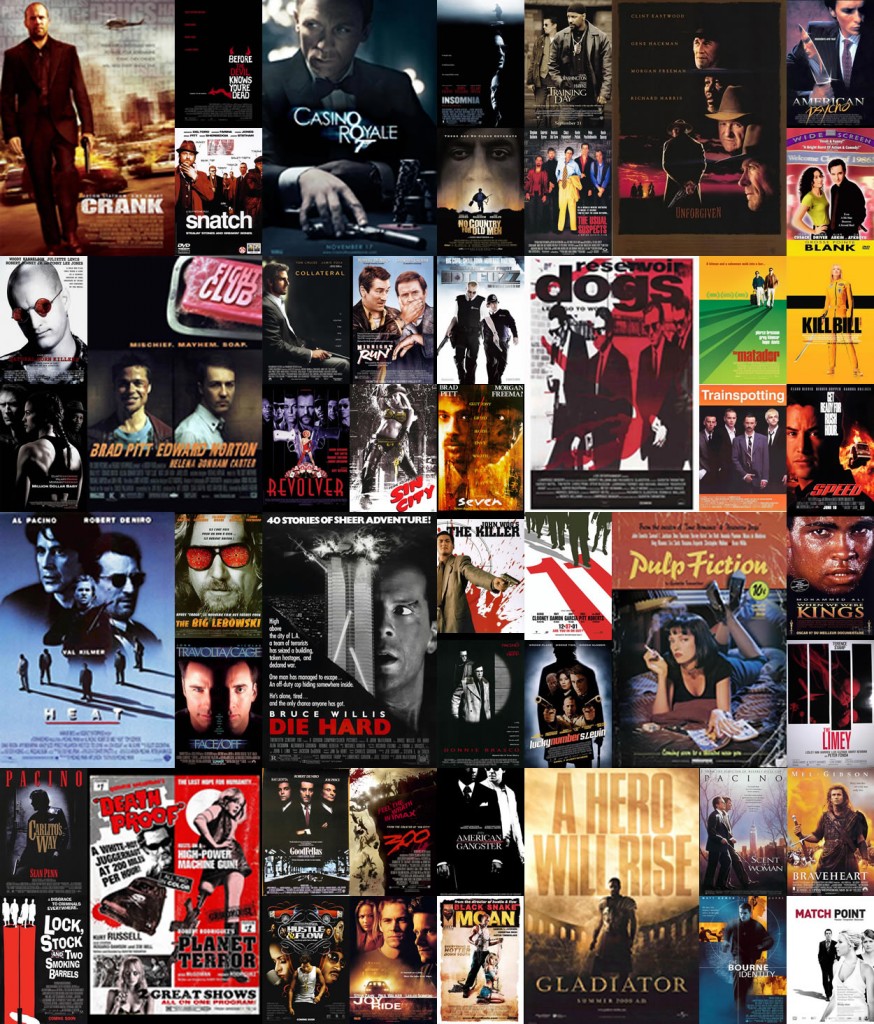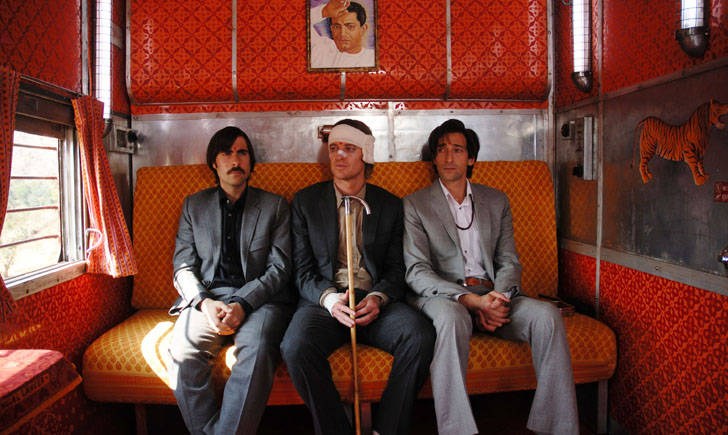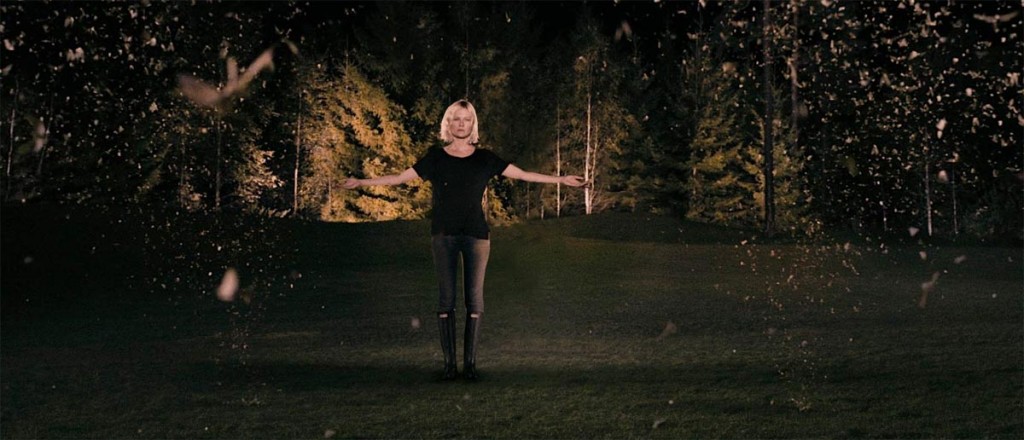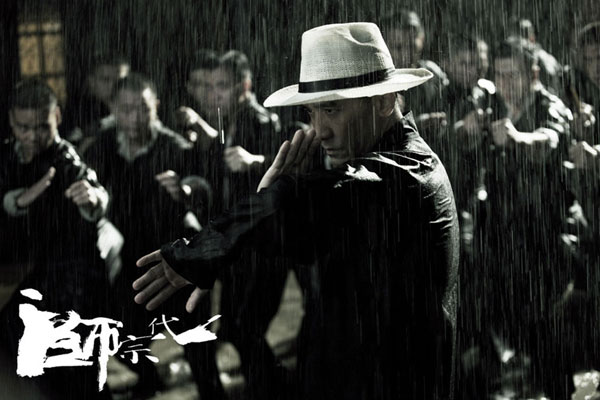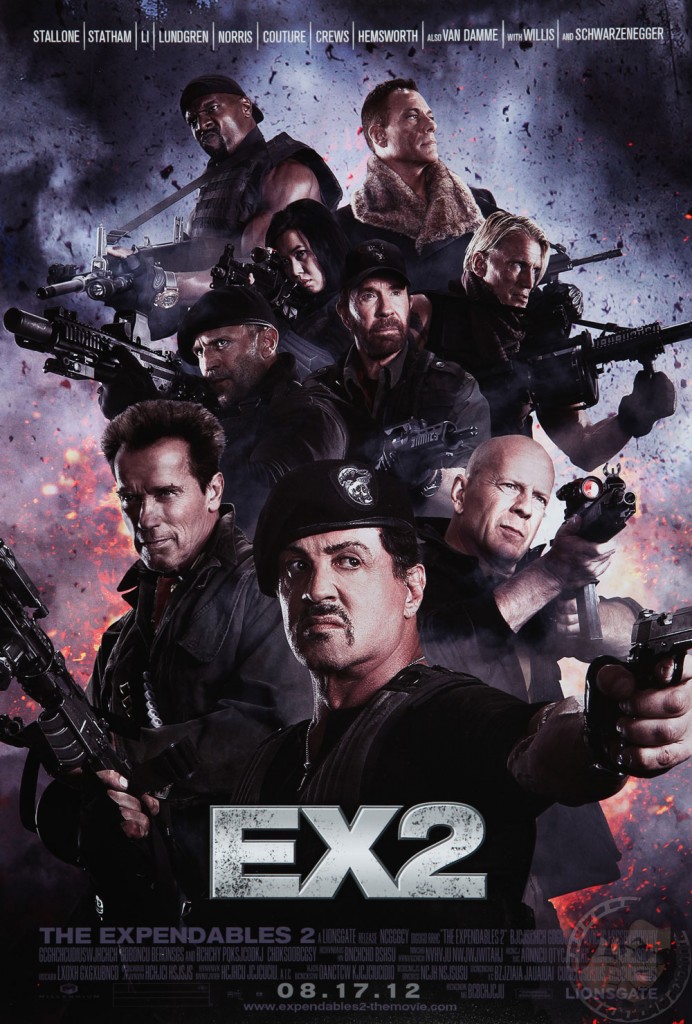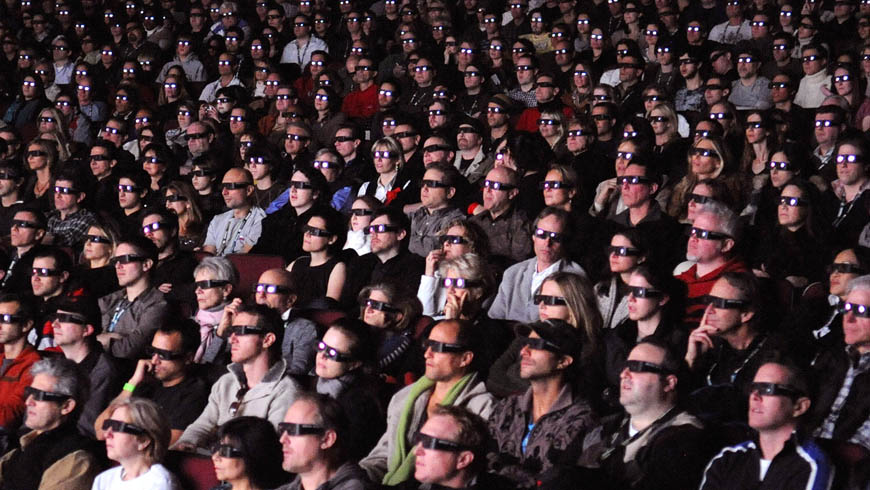Why Movies Are Still Cool
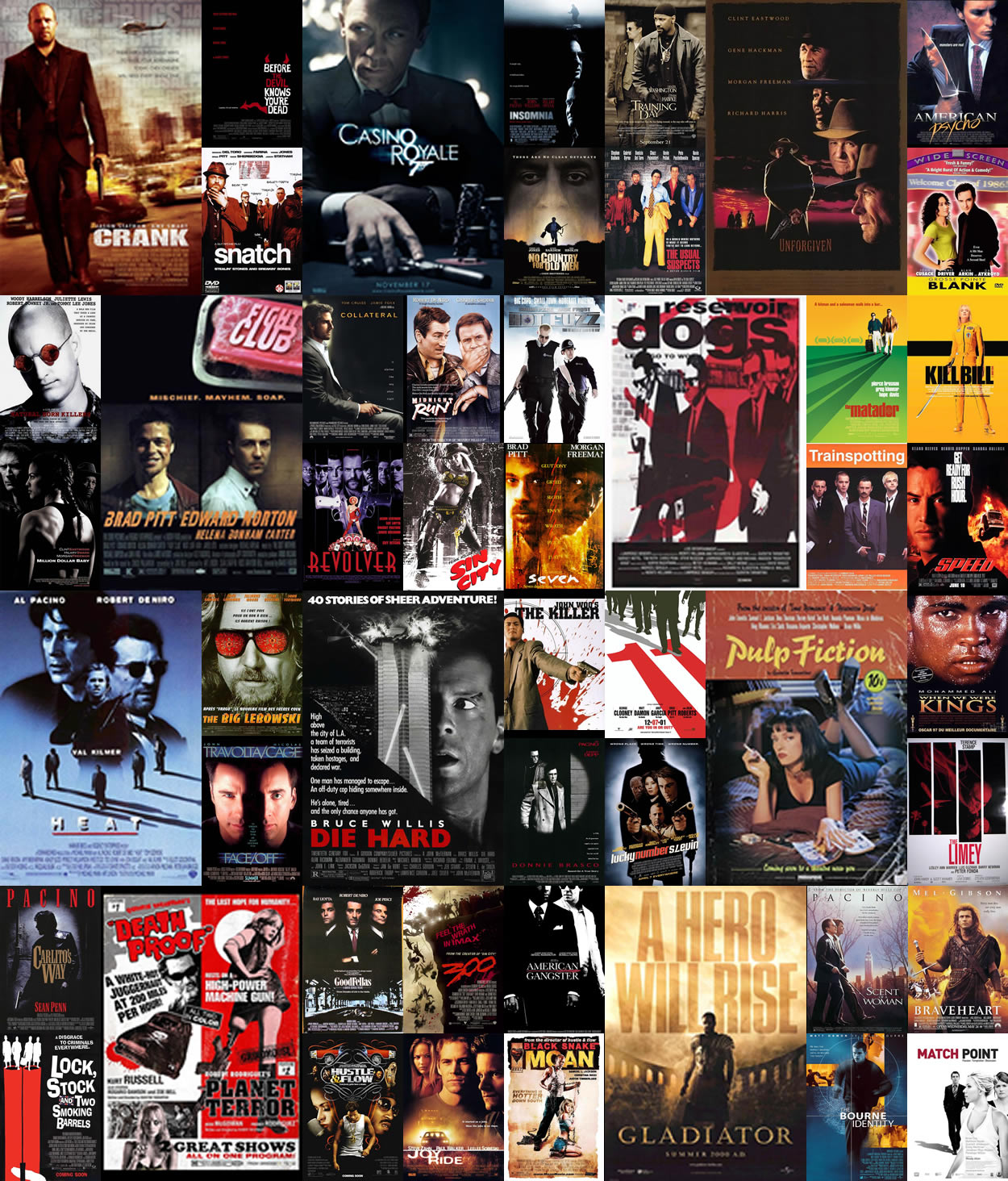
And so another year passes and we find ourselves knee-deep in the mire of low expectations as a we look forward to another 12 months of sensory assault by the movie industry, clamoring for a share of your hard-earned cash in exchange for distraction, entertainment and (sometimes) insight.
Bleak? Probably. If you’ve been following my blog so far then you’re aware that I don’t hold back in my opinions on where the industry has gone right and wrong in terms of meeting audience expectations. And while I can often explain away my in-built pessimism by claiming that I’m just a humble realist, supported by my limited experience and knowledge of working in the film industry…I can’t get away with being such a downer all the time. Because the truth of the matter is that, despite the bad movies, brain-fodder and soul-slashing craputainment that we may be in for in 2012, movies are still cool. After all I wouldn’t be working in the industry if they weren’t. And being a realist is boring when there’s so much potential for what’s going on at the moment in the movies. There’s always a light of hope at the end of the tunnel and so I thought I’d start the year on the positive foot and remind ourselves why film is still exciting, fun, interesting and worth spending 90+ minutes of our lifespan on them.
In short, this is my in-depth take on my most anticipated films of 2012.
As we enter into the early months of 2012 (insert obligatory Mayan prophecy bullshit here), I’m reminded that we are living in a unique and exciting time in the world of movies. It’s easy, after all, to be downhearted about the state of what’s going on in this industry – the economic recession and the so-called “threat” of piracy has seen studio executives act more douchbag-ish towards themselves and the audience than their nominal quota, Hollywood is still riding its comic-book/reboot/remake/fan-film/unnecessary-sequel dead horse deeper into the ground, DVD and Blu-Ray sales are plummeting at a terrifying rate, the Video-On-Demand and Internet Distribution model has baffled everyone currently in power and movie audiences are, seemingly, sick and tired of Hollywood’s lowest-common-denominator blockbuster formula and its bait-and-switch shenanigans in how movies are distributed, screened and marketed to the consumer.
All in all, the industry is currently filled with a lot of unhappy people who, in their (sometimes) justifiable panic, are sharing the terror and misery around the market and out to their paying customers. People say that we’re currently experiencing a ‘Second Golden Age of Television’ with the birth of the long-form, cable-TV drama format and many cinema audiences have supposedly given up on theaters and movies and turned to shows like Game Of Thrones, Boardwalk Empire, Community, 30 Rock, The Walking Dead and many, many others, in their search for narrative that has depth, meaning, relevance and delivers engaging entertainment. TV viewership is up, box-office ticket sales are down and the word on the street is that Hollywood is just refusing to listen because all they can see is how much money they’ve stopped making over the last few years instead of how much money there may be if they just start thinking laterally.
Dear crap, I’m doing it again aren’t I? Sorry, nixing the realism.
Ahem.
Okay. So despite all this going on, movies are still not in danger. Movies, in fact, are still relevant and still have a market that is hungry for new content as long as that content is fresh, invigorating and worth the money. And while we may argue that Hollywood is, for the most part, getting it wrong…there’s still evidence, screening soon (or even right this minute) at your local theater that should serve to remind us that there is brilliance out there so long as you know where to look for it.
THE NEW FRONTIER: INDIE AND ‘FOREIGN’ FILM
I know I harp on and on about how cool modern independent films are getting, but I need to harp on them more. Indie films come in a few varieties – there’s the non-entity, backyard, indie film which 99% of us will never actually see; home-made horror, action, thriller or introspective drama films cobbled together by teams of friends, family and someone’s borrowed video-camera. Then there’s the definitive ‘Independent Movie’ made popular by the New Wave cinema of the 1960’s and then again by the Sundance Darlings period which has given rise to so much (primarily American) films about characters, emotional issues, complicated relationships and more kitschy, retro, art-design than any hipster could withstand for a lifetime. Basically the default mental image of the ‘indie movie’ (and, yes I admit, thousands of other films that are actually better than that this sentence makes them out to be).
Finally there’s the new 21st Century phenomenon: the Indie Genre Film. Difficult to pull off because of their budgetary requirements, but increasingly becoming possible via the advent of modern digital technology and the Internet, these deliberate competitors of the Hollywood audience share are now rising out of the earth in all directions at a volumetric rate unlike anything that’s been seen before. The English speaking world’s film industries are no longer pulling their punches, they’re going straight for the throat and attempting to wrench the public’s eye away from the $200 million epics by replacing money with intensity, special effects with story-telling, quantity with quality. Via the power of the Internet, which can now deliver movie-marketing (trailers, posters, reviews) to audiences beyond what was capable only ten years ago, consumers are now starting to become aware of a wide range alternatives for their viewing choices. And now, foreign film markets are seeing getting in on the act. Recent studies show that more people in the European and English-speaking countries watch non-English film and television than ever before and they’re definitely liking what they see.
The recent success of foreign-language genre films like Trollhunter, Viva Riva, The Secret In Their Eyes, The Girl With The Dragon Tattoo, Oldboy, [REC], The Orphanage and City Of Men is testament that not only do other film industries make product worthy of your attention, but that product is phenomenally superior to what you may have been forced to sit through had you purely gotten your entertainment from Southern California. While English-language indie genre titles like District 9, The Devil’s Double, Paranormal Activity, Memento, The Descent, In Bruges and Monsters have opened the floodgates of what defines broad, diverting, seat-of-your-pants entertainment for the masses while stealing copious quantities of limelight from the hundred-million-dollar advertising campaigns of the studio movies.
And just when you thought that things couldn’t get any better, over the last few months we’ve seen evidence (or at least the heart-felt promise) of even better things to come. Of course you can’t talk about indie-genre films of 2011 and not mention Drive.
If you’re a film buff, you’ve probably already seen this (if not at least heard of it). Many of you are already crushing on Ryan Gosling like mad and have dug out all of your 80’s New Wave CDs. Drive is a beautiful example of the form in which indie-genre films are taking; utilizing novel story-telling structure and style, intricately mixing drama, crime and sparse, but amazing, action sequences and yet resting the power of its narrative on the shoulders of a good cast and a strong directorial vision. Drive is a classic independent movie, but with the balls and flair to sneak under the mainstream radar and slowly take its audience, one person at a time, with its sheer willpower.
Of course, if your taste in movies requires something a little more action-packed than the slow burn, hard-boiled, stew of Drive, then maybe you should check out the upcoming, and quintessentially British, sci-fi action thriller Attack The Block.
An unashamedly straight-forward blockbuster-killer, first time director Joe Cornish delivers a mesmerizing blend of sci-fi horror, tongue-in-cheek comedy and, surprisingly, an underlying social message pertaining to the plight of England’s under-classes. And, as if all that wasn’t daring enough, he successfully takes the alien-invasion story out of America and deep into the South London Council Estates, replacing the U.S. military with a pack of drug-peddling, violence-obsessed, teenage delinquents who gradually prove their worth not only to themselves, but also to an audience who would otherwise find it impossible to feel any sympathy for them at all. Thrills, spills, laughs, visual effects AND a good dose of smarts and themes to boot. Take that Hollywood Remake Machine!
Putting aside the genre flag for a moment, we can’t leave 2011 without acknowledging the two great, classical, independent film achievements of the last 12 months which were notable, not only for their impressive scale and ambition, but also for the way they captivated (and at times divided) mainstream audiences. Combining A-list star power, servings of visual effects and captivating production value, Lars Von Trier’s Melancholia and Terence Malick’s The Tree Of Life offered intriguing commentary on existentialism while remaining true to their distinctly non-mainstream, art-house, independent roots. I like to regard these two films as unofficial companions; one dealing with the birth of the world and humanity while the other pertains to its ultimate destruction and our feelings towards that final destination that is Death. Malick and Von Trier offered a sense of hope – not only to their fans who had feared both artists had gone round the bender, but also towards the Independent Film movement as a whole in regards to the ability for filmmakers to tell stories outside the confines on generic narrative and genre.
As for what the foreign film market has in store for us in 2012, I don’t even know where to begin. Beloved Korean director has already taken audiences overseas down a mind-shattering spiral of blood, terror and destruction in his upcoming psychological thriller/revenge film I Saw The Devil.
Meanwhile in Malaysia, action-director Gareth Evans has taken the cult and martial-arts world by storm with his epic concept film The Raid which has one of the most intriguing and eyebrow-raising trailers I’ve seen in a long time.
And on the subject of martial arts, everyone is holding their breath in expectation of beloved Chinese auteur Wong Kar Wai’s own entry into the world of kung fu with his wuxia-biopic of Wing Chun teacher Ip Man. Entitled The Grandmasters, people are already giddy with expectation on Wong, the darling of arthouse world cinema fans, will do in his first definitive entry into the action genre.
REAL ARTISTS STILL HAVE SOMETHING TO OFFER
So now that I’ve bashed poor Hollywood into the dirt with my atrociously unsubtle vitriol, is there any hope left for the product coming out of Los Angeles and its ancillary industries?
Of course there is.
Hollywood may be a machine, but it’s a machine that only treads where others have already gone and returned with their pockets full of riches and stories of so much more gold yet to be mined. Those that beat down these initial pathways (or rediscover old tracks long thought forgotten) are the artisans, the power-houses, the creative visionaries that Hollywood relies on time and again to save its ass and also be the figureheads upon which the rest of the industry can sculpt its elaborate fantasy.
When the rest of the industry is happy to mine children’s fairytales (note the TWO upcoming live-action versions of Snow White, the epic-fantasy version of Jack & The Beanstalk and a dark, twisted, action-movie version of Hansel & Gretel), revamp family board games into dark apocalyptic cinematic hard-assery, reboot old franchises to draw a new generation of consumers or simply throw all their biggest money-making figureheads into a single product…the artists are still trying to bend the rules to their whim in the quest for pushing mainstream, commercial films into something worthwhile again. Or at least they’ll do the best they can given the limitations they have to work with.
As we enter 2012, we find ourselves in surprisingly good company. The last 6-8 weeks have seen a bumper crop of critically acclaimed, audience-satisfying, finely crafted films from the studios that have given a lot of hope to film buffs. Over the Christmas and New Year season, we’ve seen Steven Spielberg come out from the licking he endured in the last Indiana Jones movie with a double-serving of intriguing works: first the motion-captured, slam-bang, bullseye adaptation The Adventures Of Tintin which has turned out to be almost everything it promised including a genuine return to the ‘Spielberg-of-yesteryear’ who was so instrumental in shaping the modern action movie. And for those who found Tintin not to their taste, he pulls out another fascinating entry much closer to his current, slightly misanthropic and indulgent, style: the big screen adaptation of War Horse.
And as if the world didn’t need yet more proof that the best films ARE the product of great, visionary, anal-retentive directors with a filmography of ass-kicking work, Brad Bird’s first foray into the world of live-action movies (after breaking down everyone’s doors with his cult classic animation The Iron Giant and Pixar’s two strongest films – The Incredibles and Ratatouille) turned out to be a return to the kind of film studios hope and pray for every year; the crowd-pleasing, critic-proof, doesn’t-insult-your-intelligence, totally-worth-your-money blockbuster that was Mission Impossible: Ghost Protocol.
The fourth entry into the lackluster, vanity-project, has nothing-to-do-with-the-original, Mission Impossible series, Bird’s handling turned out a movie so good critics and audiences were astonished that even Tom Cruise didn’t get on anyone’s nerves. This baby is still playing in some places and if you’ve got the chance to see it in IMAX format then you need to take an opportunity to catch it NOW before it vanishes off the screens!
And the artists of Hollywood continue to deliver as we go into 2012. First up is Martin Scorcese’s Hugo – an adaptation of the popular children’s book “The Invention of Hugo Cabret” – which is already getting tips as this year’s Best Film Oscar contender despite Paramount Pictures stubborn insistence that the movie is a mad-cap, fluffy, goofy, children’s film. Hugo‘s insipid trailer doesn’t do justice to the themes and content at the core of Scorcese’s film which (without giving away too much) is about the history of movie-making.
Scorcese’s film is a bang-on delivery, coming in the guise of a family film and yet espousing thematic weight and depth that does justice to his reputation as one of the world’s greatest movie directors as well as the reputation of the historical figures the book is about. And, on top of all this, Scorcese is even receiving praise for his unique and excellent approach at shooting the film in stereoscopic 3D which has left critics hailing it as one of the best 3D movies to date. Not a bad way to start 2012, Mr Scorcese.
Onto the subject of revisiting familiar territory, two titanic directors of the Los Angeles industry are returning to the universes that made them household names: Ridley Scott returns to the Alien franchise with his new film Prometheus while Christopher Nolan returns to Gotham City to deliver his third entry in his Batman trilogy: The Dark Knight Rises.
Ridley Scott has already got film buffs chattering with his supposedly “unique” take on Prometheus which he mysteriously claims to be a not-a-prequel-prequel; though he is reticent to explain himself just yet. Judging by the teaser trailer and subsequent leaks from the set, Scott appears to be trying to tell a tangential story set in the same universe, but not directly linked to the Sigourney Weaver-helmed sci-fi horror saga. This outside-the-box approach to re-invigorating a franchise has a lot of people excited, but of course the addition of a brilliant cast, stunning visual effects and beautiful 3D photography recorded on the new RED Epic cameras seems to suggest Prometheus will be a film and tech-nut’s delight.
Nolan’s highly anticipated return to the world of Batman in The Dark Knight Rises is arguably the hottest subject of discussion on the Internet for the last six months. Proving his chops with a host of interesting (if not all strong) films like Memento, Insomnia and The Prestige, Nolan satisfied fans with his modern take on the Batman comic book character with adequate, if not very good, Batman Begins. But it wasn’t until he wrestled complete creative control over the world of Gotham City (and discharged studio hack writer David Goyer from the production) that Nolan really flexed his creative muscles and delivered a masterwork that will truly stand through the ages as a ‘great film’: The Dark Knight. And seeming not happy to capture lightning in a bottle once, Nolan – holding artistic dominion over studio accountability – hit another home run with his highly original and astonishingly intricate hard-action, sci-fi heist film Inception. With the stage now set and two astonishing, back-to-back, works fresh in the public memory, hopes for The Dark Knight Rises are through the roof and that Christopher Nolan will remind us why, when driven by the right hands, Hollywood can make us experience things that no other medium can.
Finally, even in the murky quagmires of the reboot/remake culture that audiences are protesting loudly against, Hollywood’s true artists can still shine as well as make us pause, take a second look and reconsider the possibilities of what visionary filmmaking is.
I’m not going to split hairs here. David Fincher’s The Girl With The Dragon Tattoo is not a re-adaptation or whatever defenders may claim. It’s a remake, at a times scene-for-scene, line-by-line enactment of the original Swedish television movie. But that doesn’t mean it’s nothing short of brilliant film-making at the highest level. Even as a huge fan of the original, I can’t help but be struck by the elegant, efficient and high-tech execution that this remake delivers, often surpassing the original in places and keeping strong pace the rest of the time. Between Rooney Mara’s Oscar-worthy performance, Fincher’s sumptuous, $100 million digital cinematography, Trent Reznor’s angry and avante-garde music score and the film’s dark, brutal and violent content, I was glued to my seat for the movie’s near 3 hour running time and you will be as well. The new version of The Girl With The Dragon Tattoo is modern suspense film-making at its finest, a terrific way to enter the new year for the art of adult story-telling and, if nothing else, an insightful look at what $100 million can buy you when you don’t have alien invaders, exploding skyscrapers or transforming robots to deal with.
THE BEST OF 3D IS YET TO COME
Of course it wouldn’t be a 2012 coming attractions blog post without mentioning a certain New Zealand-shot film currently in the works, nor without mentioning something about 3D. Despite the very loud component of the public that likes to protest about 3D films (particularly online) and the shortcomings of the process to date (particularly with horrific post-converted 3D films), stereoscopic 3D is probably here to stay.
It’s been a rough road for 3D since the release of James Cameron’s Avatar and it’s not difficult to see why. The process is difficult to learn and even more difficult to master for the filmmaker, the idea of wearing annoying, ill-fitting, glasses in a movie-theater is not an ideal solution and of course every studio and filmmaker who wants to cash in on the stereoscopic movement without paying the money to invest in doing it right has practically assaulted audiences worldwide with terrible, embarrassing and, literally, nauseating 3D spectacles that should never been committed to film. Add to the fact that 3D movies are expensive and studios who have been instrumental in the technology developing thus far (at least as far as cinemas are concerned) have not received Avatar-like box office from other stereoscopic films.
But that’s not enough to kill 3D just yet. The box-office expectations for 3D films is starting to find a rhythm and so far its still proving to be profitable. Glasses-free 3D technology is already well into development and we may be seeing public tests within the next 2-3 years. And of course the rare, odd, stereoscopic film that’s had FANTASTIC 3D has proven to be a hit with audiences even now in 2012. CGI animated films like Kung Fu Panda 2, Pixar’s Toy Story 3 and the surprise-hit How To Train Your Dragon have turned the heads of a lot of 3D critics and impressed upon audiences the potential of the artform, especially when you have the ability to create everything out of thin air. And, unsurprisingly, documentaries have given 3D a new lease on life thanks to the efforts of such films as TT3D: Closer To The Edge…
…and Werner Herzog’s beautiful Cave Of Forgotten Dreams, both of which have used the medium to great effect in providing an additional sensory experience to help audiences get closer to their subjects.
Of course one cannot forget about the two biggest 3D titles currently in cinemas right at this moment: The Adventures Of Tintin and Hugo, both of which provide very satisfying, authentic and elegant stereoscopic presentations.
But while you may have to wait a few years yet to experience 3D without those irksome glasses, you only have to wait another 11 months to experience the next big step in the technology (assuming your local theater will support it): Peter Jackson’s The Hobbit: An Unexpected Journey projected at 48-frames-per-second.
Projecting a 3D film at 48fps (as opposed to the standard 24fps) double the number of pictures you will see projected on the screen in a single second. This process, initially experimented with but never actually used in Avatar, provides a smoother, more realistic three-dimensional image while removing the problematic shuttering/ghosting effect that has been attributed to giving viewers headaches or motion-sickness while watching 3D movies. If your local cinema has the latest digital projection systems, you will be able to experience The Hobbit in 48 frames per second (and eventually Avatar 2 at 60 frames per second: the rate at which the human eye operates) this December. And for the record, if you’ve already seen The Hobbit trailer in 3D at your local cinema, that trailer was projected at 24fps, not 48.
MOVIES CAN STILL INNOVATE AND CHALLENGE
2012 is also set to, once again, show the world how innovative films (even mainstream ones) can be in the context of how they’re made and what they depict/offer to an audience. There are as many different ways of making a film as there are individual movies in existence and, even within that number, one must remember that the ways of telling stories are also diverse.
One notable entry seems, at first, a fairly innocuous and ordinary, flag-waving, patriotic, American military action movie. Until you look closer. Act Of Valor is a feature film project that started out as a recruitment and training tool for U.S. Special Forces, but quickly expanded into a full-length movie project of immense scale and ambition. Firstly, the soldiers depicted in the movie are not actors; they are the real thing. Actual U.S. Navy SEAL officers, guided by some dedicated acting coaches, executing genuine tactics and using actual U.S. military equipment and vehicles with unprecedented access. The film even boasts that some of the gunfire seen in the film was executed using live-rounds. That’s real, actual, bullets on-screen. The second notable aspect of this film is that it was photographed (for budgetary reasons) entirely on DSLR cameras; that’s right the high-end still cameras by Canon and Nikon which can also shoot video.
Sure, it’s blind propaganda filled with cliche platitudes about honor and sacrifice which go unappreciated by the people who send these soldiers out to die…but it doesn’t mean it doesn’t make terrific entertainment. Especially when you consider how the film was made to begin with.
And it’s not just the U.S. Government who can take the ‘low-budget approach’. Coming out later this year is Stephen Soderbergh’s fascinating, if not just a little strange, hard-action movie Haywire starring mixed-martial-arts fighter Gina Carano. Apart from hiring an actual cage-fighter to take the lead in a major motion picture, Soderbergh adopts a near-guerilla shooting style by recording the majority of his $25 million USD motion picture using natural lighting provided by room lights and sunlight.
Filmmakers are dubious about Soderbergh’s rejection of film lights, but for movie fans it’s just one more unique, intriguing and innovative twist to look forward to in the coming year (let alone seeing how well Soderbergh can handle an action flick!).
Of course in today’s high-tech, digital, tech-innovative world, it should come as no surprise that one of this year’s most beloved, praised and award-winning films abandons all these trends and tropes to produce something truly classic and antique. The Artist is a stunning and genuinely moving silent-film, made in the style and set in the era that the medium was in its heyday, that tells of the relationship between a rising actress and a declining actor as the industry transitions from silent cinema to talkies.
Satirical, but equally lyrical, The Artist has earned a whopping six Golden Globe nominations and will provide a good deal more heat to the competition during awards-season. But, if nothing else, it provides a wonderful escape from the 21st Century and all the trappings of modern movies and one I would definitely suggest you keep your eyes on.
So as you can see, my list of anticipated films for 2012 is kinda short on actual number of films, but I guess that’s the point. It’s not about what films *I* particularly want to be excited about, but really what kind of films that we all should be looking out for and – most importantly – supporting with our hard-earned money above and beyond the generic fodder and crap that gets served to us week-in and week-out. 2012 promises to be quite an interesting year filled with some highly unique (and highly anticipated) titles that could really influence the way we make our films and the way we enjoy them.
And while I can’t guarantee that anything I’ve talked about here will be fantastic, but when it comes to hedging my bets in movies, I’m glad that I have still have a vast array of unique, different, ambitious, innovative and artistically resilient options to choose from.
And that is why movies are still cool.
Thanks for reading and Happy New Year!
